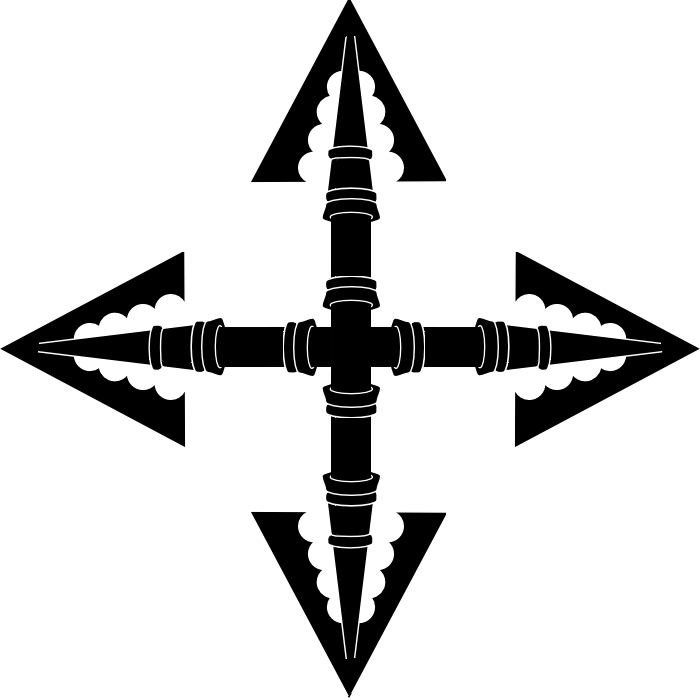Pheon Cross
As seen in the illustrations on the left, the arrow heads of the Pheon Cross may be pointing outwards or inwards, and the arms may be long or short. For each arrow head, the distinguishing feature is the engrailed inner blades. (If an arrow's inner edges are smooth then one of several different names is used, as described on the Barbee Cross page.)
So a pheon is described as a flat, engrailed, barbed arrow, with no other particular meaning. It is incorporated in a few heraldic coats of arms, mainly English.
The arrow head shown on the right (a single pheon, not the cross) was used by the Office of Ordnance created by Henry VIII in 1544 and became a common mark on anything being the property of the monarch.
The etymology of pheon and why this symbol was chosen are both unknown, but the east-facing Norman 'Broad Arrow Tower', one of 13 defensive towers around the Tower of London, was built by Henry III some time between 1238 and 1272 to house part of the garrison. They presumably carried lances with the broad arrow pattern.
Gold stars (like Baptismal Crosses) appear on the walls of the 1st floor chamber of the Broad Arrow Tower.
This room was occupied by Sir Simon Burley, tutor to Richard II, who took refuge in the Tower during the Peasant's Revolt of 1381.
With a painting on the door of St. Peter holding a key (see Keys of Heaven), the gold stars and the blue background appear to represent heaven. But rather than the familiar triangular wedges usually used for stars, these might have been deliberately fashioned to represent Pheon Crosses.
In 1698 it became illegal to mark anything with the symbol which was not government property, and it is still an offence today. The mark was ubiquitous in the two World Wars and appeared on ordnance and military equipment, although not on war-related civilian ID cards or food ration cards.
Large broad arrows were printed on British prison uniforms from the 1870s. Not surprisingly, convicts throughout Britain and its colonies felt uncomfortable at being branded 'Government Property' and the fashion was officially retired in 1922. (Some older prisons in Britain still have a few old pieces of equipment in use bearing this mark.)
Perhaps because of the symbol's dark image and the restriction on its use since 1698, the Pheon Cross is rarely seen.
An exception is the corporate logo of the EV company Charge Cars. We'll probably see much more of their logo as the business grows.
Photo from amazon.com/... (1990) published by New Amsterdam Books ISBN-10: 1871569214 ISBN-13: 978-1871569216. James Bartholomew





